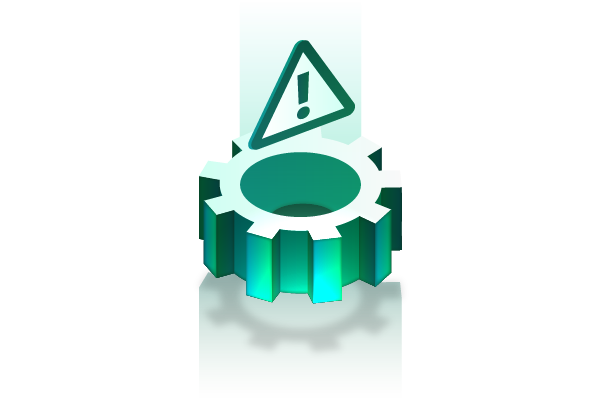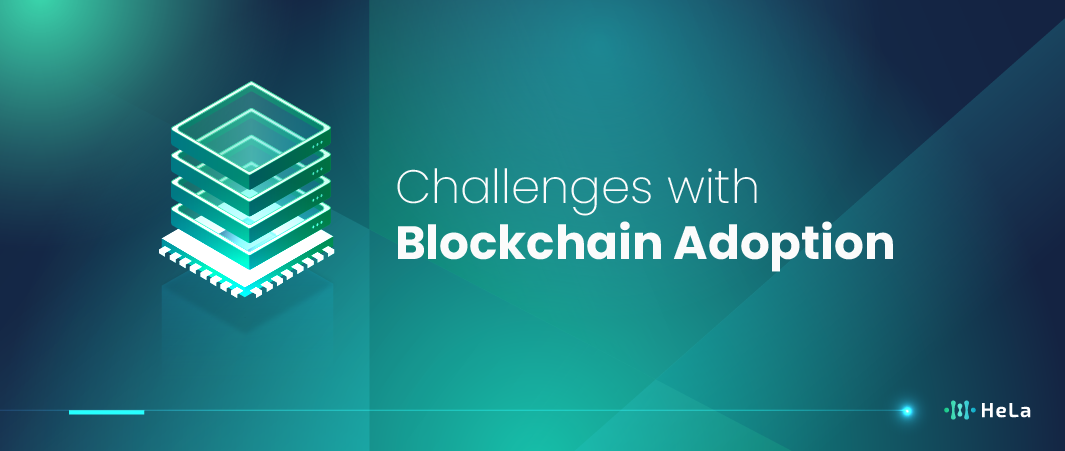Understanding these challenges is crucial for businesses and individuals considering integrating blockchain into their operations. This article delves into the top 10 challenges with blockchain adoption, providing insights into the obstacles and potential solutions. By exploring these challenges, we can better appreciate the complexity of blockchain technology and the efforts required to overcome these barriers.
In the following sections, we will explore each challenge in detail, discussing the implications and possible ways to address them. Additionally, we will examine related topics such as regulatory issues, scalability, security, and future trends in blockchain technology. Let’s dive into the world of blockchain and uncover the hurdles that need to be overcome for its successful adoption.
Scalability and Performance

The rapid growth of blockchain technology has brought about significant advancements and opportunities across various industries. However, as blockchain adoption increases, so do the challenges associated with its scalability and performance. The ability of blockchain networks to handle a large volume of transactions efficiently is crucial for their widespread implementation and success.
Current Limitations
One of the primary challenges facing blockchain adoption is scalability. Most blockchain networks, such as Bitcoin and Ethereum, struggle to handle a high volume of transactions. This limitation results in slow transaction times and high fees during periods of peak demand.
Potential Solutions
Several solutions are being explored to address scalability issues. Sharding, which involves splitting the blockchain into smaller, more manageable pieces, is one promising approach. Off-chain transactions and layer-2 solutions, like the Lightning Network for Bitcoin, are also being developed to reduce the load on the main blockchain.
Also Read: 15 Best MPC Wallets to Check this 2024
Looking Ahead
The future of blockchain scalability looks promising, with ongoing research and development aimed at improving performance. As these solutions mature and are implemented, we can expect blockchain networks to handle higher transaction volumes more efficiently, making them more viable for mainstream use.
As the blockchain community continues to innovate and develop new solutions, the scalability and performance of blockchain networks are expected to improve significantly. These advancements will pave the way for broader adoption and integration of blockchain technology into various sectors, ultimately realizing its full potential in transforming the way we conduct transactions and manage data.
10 Challenges with Blockchain Adoption

Blockchain technology has gained significant attention for its potential to revolutionize various industries by providing decentralized and secure solutions. However, despite its promise, there are several challenges that hinder its widespread adoption. Understanding these challenges is crucial for businesses, developers, and policymakers to navigate the complex landscape of blockchain implementation and to work towards viable solutions.
1. Scalability Issues
Blockchain networks often struggle with scalability, limiting the number of transactions they can handle per second. This is a critical issue as mainstream adoption would require the network to process thousands, if not millions, of transactions simultaneously. Current popular blockchain networks like Bitcoin and Ethereum can process only a limited number of transactions per second, leading to bottlenecks.
Solutions like sharding, which involves splitting the blockchain into smaller, more manageable pieces, and off-chain transactions, where transactions are processed outside the main blockchain, are being explored. However, these solutions are not yet fully implemented or universally adopted, leaving scalability as a significant hurdle.
2. Regulatory Uncertainty
The lack of clear regulations and legal frameworks creates uncertainty for businesses and investors looking to engage with blockchain technology. Different countries have varying approaches to blockchain and cryptocurrencies, ranging from outright bans to embracing and regulating the technology. This inconsistency can lead to a fragmented global market, making it difficult for businesses to operate across borders. Governments worldwide are still trying to understand the implications of blockchain and develop appropriate regulations. This regulatory uncertainty can hinder investment and innovation in the blockchain space, as businesses may be hesitant to commit resources without a clear legal landscape.
3. Interoperability
Different blockchain networks often cannot easily communicate with each other, creating silos and limiting the technology’s potential. This lack of interoperability means that assets and information on one blockchain cannot be seamlessly transferred to another, reducing efficiency and utility. Efforts are underway to develop interoperability standards and protocols that can bridge different blockchain networks. Projects like Polkadot and Cosmos aim to create ecosystems where multiple blockchains can interact, but widespread adoption of these solutions is still pending. Without interoperability, the blockchain ecosystem remains fragmented, which can stifle innovation and adoption.
4. Security Concerns
While blockchain technology is inherently secure due to its decentralized nature and cryptographic principles, it is not immune to attacks and vulnerabilities. Issues like 51% attacks, where a single entity gains control of the majority of the network’s mining power and can manipulate transactions, and smart contract bugs pose significant risks. Smart contracts, which are self-executing contracts with the terms directly written into code, can have vulnerabilities that hackers can exploit. Ensuring the security of blockchain networks requires continuous vigilance, robust security practices, and advancements in cryptographic techniques to mitigate these risks.
5. Energy Consumption
Blockchain networks, especially those using proof-of-work (PoW) consensus mechanisms, consume large amounts of energy. The PoW process, which requires miners to solve complex mathematical problems to validate transactions and add them to the blockchain, is highly energy-intensive. This raises environmental concerns, as the energy consumption of major blockchain networks can be comparable to that of small countries.
To address this, more energy-efficient consensus mechanisms like proof-of-stake (PoS) are being developed. PoS reduces energy consumption by allowing validators to create new blocks based on the number of coins they hold and are willing to “stake” as collateral. Transitioning to these greener alternatives is crucial for the sustainable growth of blockchain technology.
6. Complexity and Usability
The complexity of blockchain technology can be a barrier to entry for many users and businesses. The technical jargon, intricate processes, and the need for a deep understanding of cryptographic principles can make blockchain seem daunting. This complexity can deter non-technical users and small businesses from exploring blockchain solutions. To overcome this barrier, there is a need for user-friendly interfaces, comprehensive education, and better communication about how blockchain works and its benefits. Simplifying the user experience and making blockchain technology more accessible can drive broader adoption.
7. Cost of Implementation
Implementing blockchain technology can be expensive, especially for small and medium-sized enterprises (SMEs). The costs include not only the initial deployment of the technology but also ongoing maintenance, updates, and potential scaling solutions. Additionally, there may be costs associated with training staff and integrating blockchain with existing systems.
These financial barriers can prevent smaller businesses from leveraging blockchain technology. Finding ways to reduce implementation costs, such as developing more cost-effective blockchain solutions and providing support for SMEs, is essential to make blockchain more accessible.
8. Network Congestion
High transaction volumes can lead to network congestion, causing delays and increased transaction fees. During periods of high demand, such as during a popular initial coin offering (ICO) or a surge in cryptocurrency trading, blockchain networks can become congested. This congestion can result in slower transaction times and higher fees, which can deter users and businesses.
To address this issue, solutions like layer-2 scaling, which involves building secondary protocols on top of the main blockchain to handle transactions more efficiently, are being developed. Implementing these solutions can help alleviate congestion and improve the user experience.
9. Data Privacy
While blockchain offers transparency and immutability, it can also raise privacy concerns. The public nature of many blockchain networks means that transaction details are visible to all participants, which can conflict with the privacy needs of individuals and businesses. Balancing transparency with privacy protection is a critical challenge.
Techniques like zero-knowledge proofs, which allow one party to prove to another that a statement is true without revealing any additional information, are being explored to enhance privacy on blockchain networks. Developing robust privacy solutions is essential to protect sensitive information while maintaining the benefits of blockchain transparency.
10. Lack of Skilled Professionals
There is a shortage of skilled professionals who understand blockchain technology and can implement it effectively. The rapid growth of the blockchain industry has outpaced the availability of trained developers and experts. This skills gap can slow down the adoption and innovation of blockchain solutions. Investment in education and training programs is crucial to address this gap. Universities, online courses, and industry initiatives are beginning to offer specialized blockchain education, but more efforts are needed to build a workforce capable of driving the technology forward.
While blockchain technology holds great promise, several challenges need to be addressed for its widespread adoption. Scalability, regulatory uncertainty, interoperability, security, energy consumption, complexity, cost, network congestion, data privacy, and the lack of skilled professionals are significant hurdles. Overcoming these challenges will require collaboration among developers, businesses, policymakers, and educators. By addressing these issues, we can unlock the full potential of blockchain technology and pave the way for a more decentralized and secure future.
Regulatory Issues in Blockchain

Blockchain technology has the potential to revolutionize various industries by offering enhanced security, transparency, and efficiency. However, its adoption is significantly influenced by the regulatory environment in which it operates. As the technology continues to evolve, so too does the regulatory landscape, creating a complex and often challenging environment for businesses. Understanding these regulatory issues is crucial for companies looking to leverage blockchain technology effectively.
- Regulatory Landscape: The regulatory landscape for blockchain technology is still evolving. Different countries have varying approaches to regulating blockchain and cryptocurrencies, creating a complex environment for businesses operating globally. The lack of standardized regulations leads to uncertainty and poses a significant challenge to blockchain adoption.
- Compliance Challenges: Businesses must navigate a maze of compliance requirements, which can vary significantly by jurisdiction. This complexity can deter companies from adopting blockchain, especially in highly regulated industries like finance and healthcare. Ensuring compliance with data protection laws, such as GDPR, adds another layer of complexity.
- Future Trends in Regulation: There is a growing recognition among governments and regulatory bodies of the need for clear and consistent regulations. Collaborative efforts are underway to develop international standards that can provide a more predictable regulatory environment. As these efforts progress, we can expect a more conducive landscape for blockchain adoption.
The regulatory issues surrounding blockchain technology present both challenges and opportunities. While the current landscape is fragmented and complex, ongoing efforts to establish clear and consistent regulations are promising. Businesses that stay informed and adaptable will be best positioned to navigate this evolving landscape and capitalize on the benefits that blockchain technology has to offer. As the regulatory environment becomes more standardized, the path to broader blockchain adoption will likely become smoother and more predictable.
Security and Privacy
Blockchain technology has revolutionized the way we think about data security and transaction integrity. By leveraging cryptographic encryption and decentralized consensus mechanisms, blockchain ensures that records are immutable and transparent. This inherent security has made blockchain a preferred solution for various applications, from financial transactions to supply chain management.
- Inherent Security: Blockchain technology is known for its robust security features, including cryptographic encryption and decentralized consensus mechanisms. These features make it difficult for malicious actors to alter transaction records or gain control of the network.
- Vulnerabilities and Risks: Despite its security strengths, blockchain is not immune to vulnerabilities. 51% attacks, where a single entity gains control of the majority of the network’s mining power, pose a significant risk. Smart contracts, which automate transactions on the blockchain, can also contain bugs or vulnerabilities that hackers can exploit.
- Balancing Transparency and Privacy: Blockchain’s transparency can conflict with privacy requirements, especially for sensitive data. Solutions like zero-knowledge proofs and confidential transactions are being developed to address these concerns, allowing for private transactions while maintaining the integrity and security of the blockchain.
Blockchain technology offers significant security advantages through its decentralized and cryptographic foundations, it is not without its challenges. The ongoing development of advanced privacy solutions and continuous vigilance against vulnerabilities are essential to harnessing the full potential of blockchain while mitigating its risks.
Energy Consumption
Blockchain technology has garnered significant attention for its potential to revolutionize various industries. However, along with its benefits, the environmental impact of blockchain networks, particularly those using proof-of-work consensus mechanisms, has become a growing concern. The high energy consumption required to validate transactions in these networks has sparked debates about sustainability and the need for greener alternatives.
- Environmental Impact: Blockchain networks, particularly those using proof-of-work consensus mechanisms, consume significant amounts of energy. Bitcoin mining, for example, has been criticized for its environmental impact due to the high energy consumption required to validate transactions.
Also Read: Top 7 NFT Game Development Companies in 2024
- Alternative Consensus Mechanisms: To mitigate environmental concerns, alternative consensus mechanisms like proof-of-stake are being explored. Proof-of-stake requires less energy as it selects validators based on their stake in the network rather than their computational power. Ethereum’s transition to Ethereum 2.0, which uses proof-of-stake, is a notable example of this shift.
- Sustainable Solutions: The blockchain community is increasingly focusing on developing sustainable solutions. Innovations in energy-efficient consensus mechanisms and the use of renewable energy sources for mining operations are steps in the right direction. These efforts aim to reduce the environmental footprint of blockchain technology.
Conclusion
Blockchain technology holds immense potential to transform various industries by offering a decentralized, secure, and transparent method of conducting transactions. However, the road to widespread adoption is fraught with challenges. Scalability, regulatory uncertainty, security concerns, and energy consumption are just a few of the hurdles that need to be overcome.
Addressing these challenges requires a collaborative effort from businesses, governments, and the blockchain community. Developing scalable solutions, establishing clear regulatory frameworks, and investing in education and training are essential steps to facilitate blockchain adoption. Additionally, balancing transparency with privacy and finding sustainable solutions to energy consumption will be critical in ensuring the technology’s long-term viability.
As we navigate these challenges, it is important to stay informed and engaged with the ongoing developments in blockchain technology. By understanding the obstacles and working together to overcome them, we can unlock the full potential of blockchain and pave the way for a more decentralized and secure future.
Disclaimer: The information provided by HeLa Labs in this article is intended for general informational purposes and does not reflect the company’s opinion. It is not intended as investment advice or recommendations. Readers are strongly advised to conduct their own thorough research and consult with a qualified financial advisor before making any financial decisions.

Joshua Soriano
I am a writer specializing in decentralized systems, digital assets, and Web3 innovation. I develop research-driven explainers, case studies, and thought leadership that connect blockchain infrastructure, smart contract design, and tokenization models to real-world outcomes.
My work focuses on translating complex technical concepts into clear, actionable narratives for builders, businesses, and investors, highlighting transparency, security, and operational efficiency. Each piece blends primary-source research, protocol documentation, and practitioner insights to surface what matters for adoption and risk reduction, helping teams make informed decisions with precise, accessible content.
- Joshua Soriano#molongui-disabled-link
- Joshua Soriano#molongui-disabled-link
- Joshua Soriano#molongui-disabled-link
- Joshua Soriano#molongui-disabled-link

